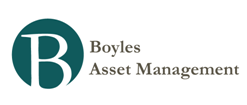Hussman Weekly Market Comment: An Angry Army of Aunt Minnies
As of Friday, the S&P 500 was within 1% of its upper Bollinger band at virtually every horizon, including daily, weekly and monthly bands. The last time the S&P 500 reached a similar extreme was Friday April 29, 2011, when I titled the following Monday's comment Extreme Conditions and Typical Outcomes . I observed when the market has previously been overbought to this extent, coupled with more general features of an "overvalued, overbought, overbullish, rising yields syndrome", the average outcome has been particularly hostile:
"Examining this set of instances, it's clear that overvalued, overbought, overbullish, rising-yields syndromes as extreme as we observe today are even more important for their extended implications than they are for market prospects over say, 3-6 months. Though there is a tendency toward abrupt market plunges, the initial market losses in 1972 and 2007 were recovered over a period of several months before second signal emerged, followed by a major market decline. Despite the variability in short-term outcomes, and even the tendency for the market to advance by several percent after the syndrome emerges, the overall implications are clearly negative on the basis of average return/risk outcomes."
As it happened, April 29, 2011 turned out to mark the exact high of the S&P 500 for the year, and was followed by a steep intermediate market plunge. My impression is that despite the recent run of speculation the market has enjoyed - largely reflecting a reprieve in European debt concerns and what appears to be a drawing-forward of jobs into the first quarter due to unseasonably favorable weather - the extended implications of present market conditions remain decidedly negative.
If you examine the components of the S&P 500 individually, you'll quickly find that the majority of those stocks are also at or through their own upper Bollinger bands. In overvalued, overbought, overbullish, rising-yield conditions, those extensions are often resolved in unison, which is what produces the characteristic "air pocket" where the index can give up weeks or sometimes months of upside progress in a handful of sessions (though we often see a knee-jerk reaction to buy that initial dip before more serious follow-through occurs).
- Hussman Weekly Market Comment: Confidence Abounds
Confidence abounds. Last week, Investor’s Intelligence reported a surge in advisory sentiment to the highest bullish percentage since October 19, 2007. The National Association of Active Investment Managers (NAAIM) reported that the 3-week average equity...
- Hussman Weekly Market Comment: The Diva Is Already Singing
Regardless of last week’s slight tapering of the Federal Reserve’s policy of quantitative easing, speculators appear intent on completing the same bubble pattern that has attended a score of previous financial bubbles in equity markets, commodities,...
- Hussman Weekly Market Comment: Baked In The Cake
“I can feel it coming, S.E.C. or not, a whole new round of disastrous speculation… and finally the inevitable crash. I don’t know when it will come, but I can feel it coming, and, damn it, I don’t know what to do about it.” - Bernard Lasker,...
- Hussman Weekly Market Comment: Declaring Victory At Halftime
Last week, the S&P 500 came within 1% of reprising a syndrome that we’ve characterized as a Who’s Who of Awful Times to Invest, featuring a Shiller P/E over 18 (S&P 500 divided by the 10-year average of inflation-adjusted earnings), the S&P...
- Hussman Weekly Market Comment: Unusual Drawdown Risk
Of course, our present concerns are based on a smaller and more negative subset of conditions that we've seen even less frequently - presently featuring not just "overvalued" and "overbought" conditions, but adding overbullish sentiment, modest but...

